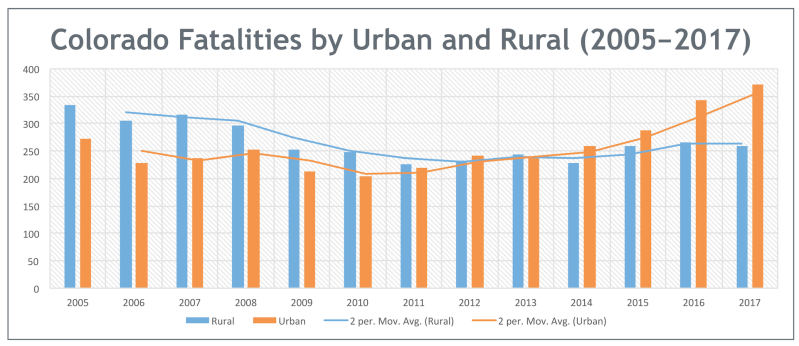Colorado Traffic Deaths Rise Again, and Again Colorado DOT Tries to Deflect Blame
CDOT boss Michael Lewis said traffic deaths are mostly a matter of individual responsibility and "education," not the design of transportation systems, but that runs counter to everything we know about places with safe streets.

It’s an annual tradition: The Colorado Department of Transportation holds a press conference on the insane loss of life on the state’s public streets, stressing the importance of seat belts and the choice to drive sober. TV anchors and newspaper reporters dutifully relay the agency’s talking points. The exercise will be repeated next year.

On Wednesday, CDOT Executive Director Michael Lewis informed the media that 635 people were killed on Colorado roads last year. That’s 30 more people than 2016 and nearly 200 more than 2014. Pedestrian fatalities rose, while bicyclist deaths held steady. Denver PD records show 51 people killed in the city — 30 of them on streets and freeways under CDOT’s control.
But Lewis doesn’t want you to blame CDOT.
“The number one party that is responsible for reducing these numbers of fatalities and serious injuries is us as individuals,” Lewis said. “We are the ones that can make this difference if we watch our speed. If we never get in a vehicle when we’re impaired. If we don’t get in a vehicle if we are tired. If we commit to putting down our cell phones.”

Lewis and Colorado State Patrol Chief Matthew Packard said the best solution to prevent traffic deaths is “education” (that was also last year’s solution). In other words, handing balloons to pedestrians crossing the street and billboards reminding people that seat belts are good.
Streetsblog asked whether there’s any evidence that these campaigns work, seeing as how traffic deaths continue to rise despite them.

“That’s one of those things that I don’t know how you measure its usefulness, but I would much rather educate than cite,” Packard said.
In other words, no, there is no evidence.
There is plenty of evidence that redesigning streets saves lives by reducing the incidence of lethal driving speeds and adding more protection for pedestrians and cyclists. But “there isn’t enough money,” Lewis said, to prevent hundreds of premature deaths across state each year with engineering fixes.
“I would say you can make virtually anything safe with all the resources in the world, but that’s just impractical,” Lewis said. So widening I-70 for $2.2 billion and I-25 for $350 million to push more cars through the state is practical, but safety is not?
Lewis sounded more receptive to redesigning dangerous streets when asked whether CDOT’s inexpensive and rapid fix to a dangerous Colfax Avenue intersection would be replicated on other high-speed urban streets that double as CDOT highways.
“I think that there are safety permits that can be made for traffic calming and a lot of that is driven by local interests… so we are open to that,” Lewis said. “It will change how people move around and a lot of people that are used to getting from point A to point B on the Colorado Boulevards or the Wadsworths or the Federals. Should those roadways be lower speeds? Should there be traffic calming designs put in place? I would say yes, there are opportunities.”
Lewis should know that multiple city plans, including the Vision Zero Action Plan, already call for these types of changes. It’s time for his agency to implement them.


